8 Sustainable Materials for All Industries
With single-use plastic seeing bans the world over, it’s never been more important to explore sustainable materials as alternatives to traditional materials.
But, it’s also never been more difficult to make the right choice – every company claims their material is perfectly sustainable and often they’re not.
That’s why today we’re going to show you 10 sustainable materials to look out for in 2022, so you can make the right choice when it comes to picking sustainable products.
3 Types of Sustainable Materials
1 ) Natural Materials
Natural materials are materials that can be found in nature. They’re naturally occurring and can generally be safely disposed of, unlike synthetic or man-made materials. Natural materials are generally grown, like wood or cotton, or mined like stone, clay, and metals. They’re a great choice if you’re looking for materials that contain less harmful chemicals and are easier to safely dispose of or reuse.
2 ) Renewable Materials
Renewable materials are materials from renewable sources. Just because a material is natural, does not mean it is renewable. For something to be renewable, it must be able to naturally replenish what is used at a rate that allows for the resource to be maintained not depleted over time. Many natural materials are not renewable but materials that can be grown and re-grown or infinitely recycled, by people or in nature, are considered renewable.
8 Sustainable Materials for All Industries
1) Wood
Wood is one of the oldest sustainable materials, which we have used for centuries to make everything from furniture to ships, homes, and fences.
More recently, wood has been used to make smaller, household, items as a sustainable alternative to plastic. These items include everything from scrubbing brushes to innovative timber magnetic soap holders for zero-waste soap bars, like our wood USB drives, charging cables, etc.
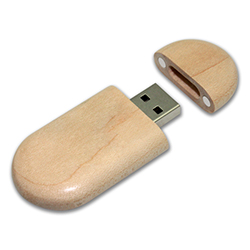
Wood is an infinitely renewable resource and, when forestry is managed correctly, it offers many additional benefits for the environment.
These include sequestering atmospheric carbon, creating habitats that support biodiversity (in monoculture forestry, many sustainable forestry regulations require a percentage of the land to be set aside for conservation), and preventing urban sprawl.
Take a look at this video by oregonforests for more on the sustainability and benefits of responsibly grown timber:
Wood’s top attributes
Infinitely renewable resource when farmed responsibly
Forests provide many environmental benefits, including carbon sequestration
Heavy, strong, and durable material, which is fully biodegradable
Can withstand water, extreme temperatures, and heavy winds
Has a vast number of applications and can be used as an alternative to many plastics
Wood is a very sustainable material, but forestry has to be managed correctly to avoid some severe negative impacts, such as loss of sensitive habitats (especially rainforests, grasslands, and wetlands) when they’re converted to timber farms.
Timber is also a water-intensive crop, which can use more water than the surrounding areas can support, and it often involves the use of pesticides and other chemicals.
That said, responsibly grown timber, that is certified by an independent organization, has to meet strict requirements to limit and compensate for negative impacts.
2) Bamboo
Bamboo is a common sustainable material choice for manufacturers and companies and nowadays you’ll find all sorts of products made from Bamboo, such as our bamboo USB drives, bamboo wireless chargers, bamboo powerbanks, bamboo charging cables, bamboo earbuds, and bamboo speakers.
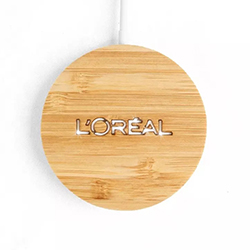
Bamboo’s top attributes.
Cultivation requires no pesticides. It regenerates from the root, so it doesn’t require re-cultivation. Bamboo is the fastest growing plant on the planet! It is biodegradable. Bamboo can be grown with ease, making it a top pick for a sustainable material in it’s raw form.
By contrast, Viscose (the textile form of Bamboo) is made with harsh chemicals and requires lots of water and energy to make, so it is not always so great.
When shopping for fabric bamboo products in the form of t-shirts, socks, boxer shorts etc. make sure to opt for Tencel or Lyocell, which is made without producing chemical waste.
3) Adobe
You may have not heard of adobe but it is a building material that’s been used for centuries and is pretty commonplace in some parts of the world.

In its simplest form, adobe is made from earth, water and dung/straw which may sound unimpressive (or even a bit gross). But, these common and eco-friendly ingredients make it one of the most sustainable building materials around!
Adobe’s top attributes
Adobe is very durable (some of the world’s oldest buildings are made from adobe)
All of it’s ingredients are readily available
Adobe bricks are naturally baked in the sun so require no energy to bake
Now, for most of you reading this, using adobe may not be that applicable to day to day life. However, if you’re taking on a construction project or are just interested in adobe and it’s usage you can check out this great resource.
4)Coconut
Coconut is no longer just a food product but is now seeing usage in a variety of products including scouring pads, bowls, cutlery and even as a sustainable building material.
To see how a humble old Coconut can be transformed into a beautiful bowl watch the video below:
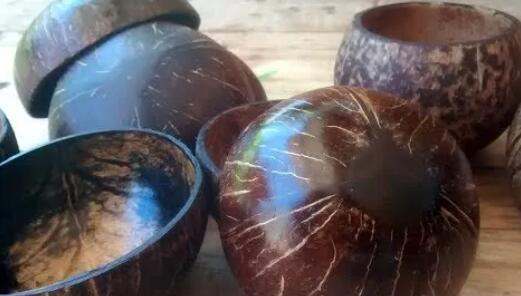
Coconut’s top attributes.
The Coconut shell can be used in its entirety, making it zero waste. No additional chemicals, such as glue, are needed for Coconut as a construction material, which makes it a ‘low to no’ toxin product.
It’s biodegradable.
As manufacturers are looking at more uses for this wonder material, it’s becoming more commonplace. Keep your eyes peeled for coconut products in 2022!
5)Bio-plastics
Bio-plastics are a hot material at the moment and many single-use plastic items are now being manufactured from all manner of bio-plastics in place of traditional petroleum based plastics.
But what are bio-plastics? Bio-plastics are semi-synthetic plastics that are derived from plants, including corn, sugar beets and castor beans. Such as the packing bags as pic below.
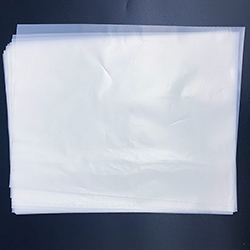
Bio-plastic’s top attributes
They are created without use of fossil fuels.
Bio-plastics are just as robust as their fossil fuel equivalents.
They may be compostable and biodegradable.
BUT a word of caution: Bio-plastics are not without their problems. Much like other plastics, they’re often non-biodegradable and produced using an abundance of harmful chemicals.
My best advice is to only use bio-plastics as an alternative to petroleum plastics but always opt for reusables and other sustainable materials where you can.
6)Stainless Steel
You’re no doubt already familiar with Stainless steel as a very sustainable material, but it deserves a place on this list nonetheless.
Stainless steel is ideal for items that you’re planning to use and keep for years to come. Think reusable water bottles, cutlery, reusable straws and other cookware.
It is even being used in place of Carbon steel, as a more sustainable (and fully recyclable) material for large scale items like bridges. And many of our products are made of stainless steel.
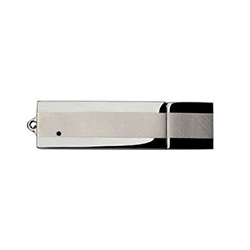
Stainless steel’s top attributes
It is produced toxin free, which is why it makes a great choice for items like cutlery and even surgical implants.
Stainless steel is super durable and with care, items can last 100s of years
It doesn’t degrade during recycling, which means it can be recycled 100s of times.
Looking at the points above it’s clear stainless steel is a great material to choose when it comes to products you plan on having with you for life!
7)Recycled Plastics
Plastics have been vilified in recent years and with good reason: they’re littering beaches and oceans and becoming a real hazard to wildlife.
One of the biggest problems we face with plastic waste is what to do with all the plastic we’ve already produced. That’s where recycled plastics come in.
Loads of products are now made with recycled plastic, including shoes, bags, cookware, furniture and more.
Recycled plastic’s top attributes
Stops millions of tonnes of waste from entering the environment.
It conserves natural resources and energy
Saves landfill space
Recycled plastics are part of the solution to the masses of plastic waste that would otherwise be in landfill or littering the environment and the products are pretty great too!
However, don’t forget that recycled plastic products can’t always be recycled again, so it may be best to opt for another material if you’re choosing a product with a limited lifespan.
8)Straw
Yes, straw, the very same straw that’s used as cattle feed can also be used in a number of applications including clothing, bio-fuel, packaging, paper and more. We have many products which are made of wheat straws, such as USB drives, charging cables, powerbanks, wireless chargers, and etc.
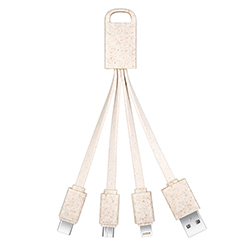
Straw’s top attributes
It’s cheap and readily available.
Straw is biodegradable.
It’s strong when woven.
You may not see it in every shop, or on every shelf like some of the other materials on this list, but it’s growing in popularity every day. Straw is becoming more and more common as a replacement for single-use plastics.
Contact: Jastin Lee
Phone: +86-15820780865
Tel: +86(755)33177406
Email: info@iprogifts.com
Add: 3F, Wencheng Building, Yousongwenchuangyuan, Longhua Street, Longhua, Shenzhen, 518110, China